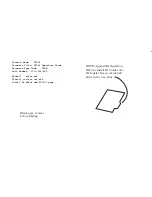
DTC 100/2
4
INSTALLATION OF THE SENSOR INTO THE COLLECTOR
Sensor T1 is inserted as an immersion sensor into the immersion tube provided on the
upper side of the collectors (figure A). The sensor is connected to clips 1 and 2. To lengthen
the cable up to 50m you can use the 2x0.75 mm2 standard cable. It is recommendable,
to allocate a VDR resistor (Figure B) to the point where the cable of the sensor and the
lengthening cable join to prevent sudden jumps of voltage (due to lightening strokes, for
example). For greater lengths or in the areas where lightening strikes are more likely to
happen, it is advisable to use an armoured cable, where the armoured coating is connected
to the grounding terminals.
INSTALLATION OF THE SENSOR INTO THE BOILER
Sensor T2 must be fixed to the provided location in the DHWS (Domestic
Hot Water Storage) or to the DHWS wall below the insulation as a surface-
mounted sensor in the upper half of the exchanger. If the sensor is installed
in the surface-mounted way, it is advisable to lubricate it beforehand with a
heat conducting grease or liquid metal.
direction of
the current
T item 1/2”
immersion
tube 1/2”
VDR resistor
thermo-shrinkable
tubes
lengthening
cable
cable of the
sensor
Installation of T2 into a specially
provided vertical or horizontal tube
(protect the sensor against unwanted
extraction)
Installation of T2 upon the boiler by
means of a clamp and a spring ribbon.
(use glease for better conductivity of
heat.
Installation into a specially
designed lateral tube
(protect from unwanted
extraction)
INSTALLATION OF THE THERMOSTAT
The thermostat is fastened upon the coat of the DHWS (Domestic Hot Water Storage) or to
its immediate neighbourhood. By simply using the outline of the boreholes drawn on page 11
of this booklet, the thermostat can easily be fastened to the wall in the heating room. Do not
fasten the thermostat below tube joints or valves to avoid water dropping on its housing.
figure: A
figure: B






























